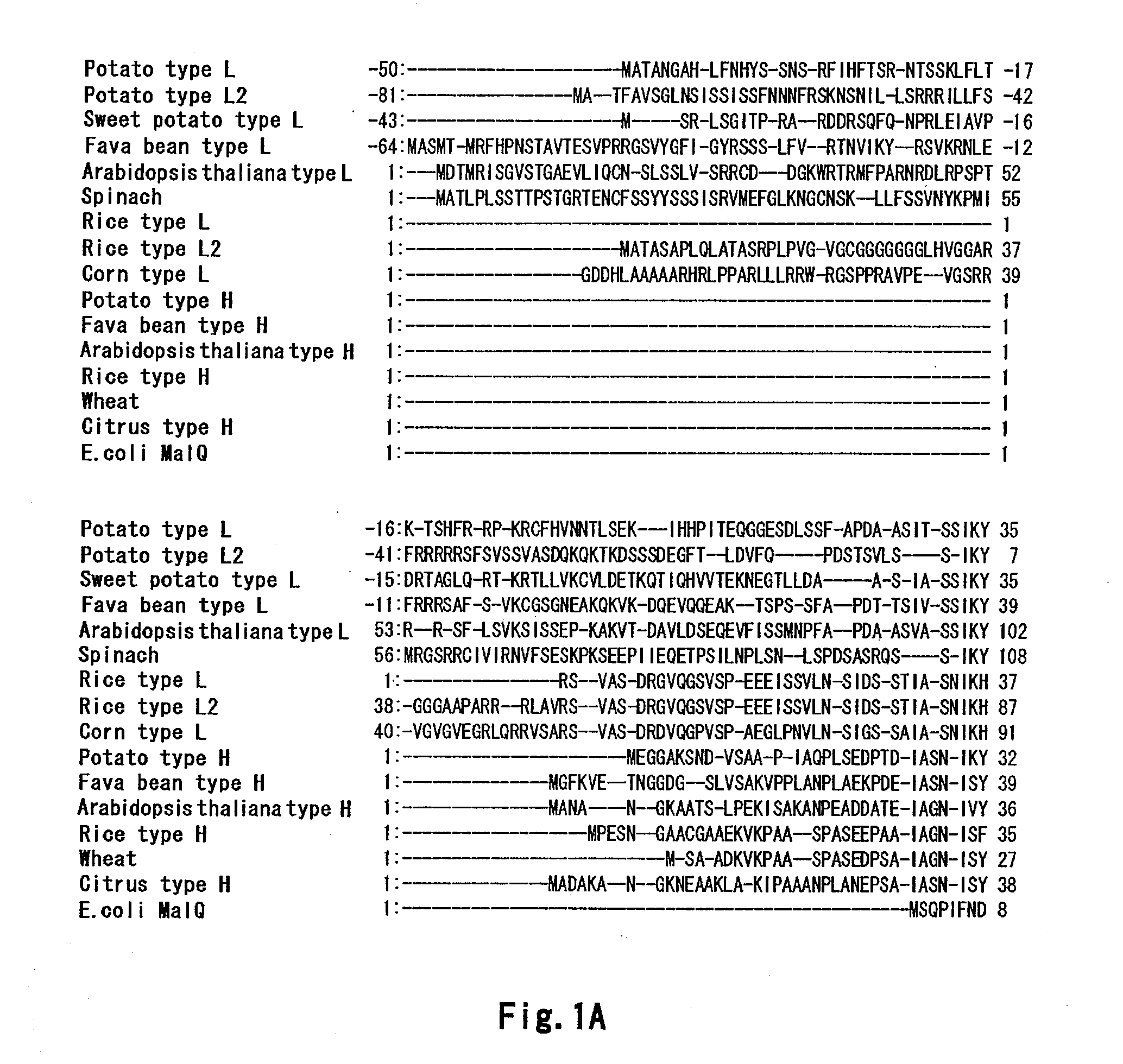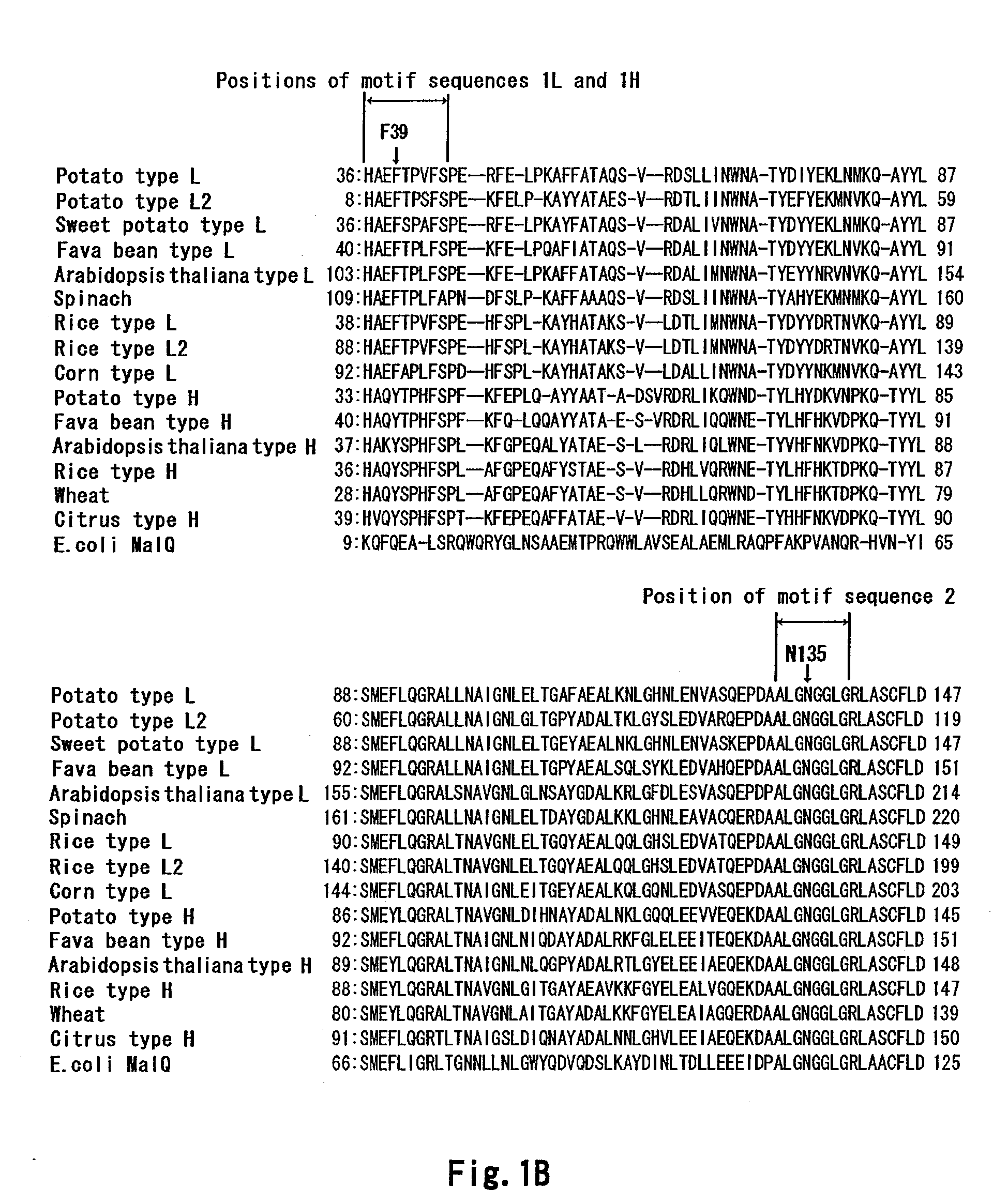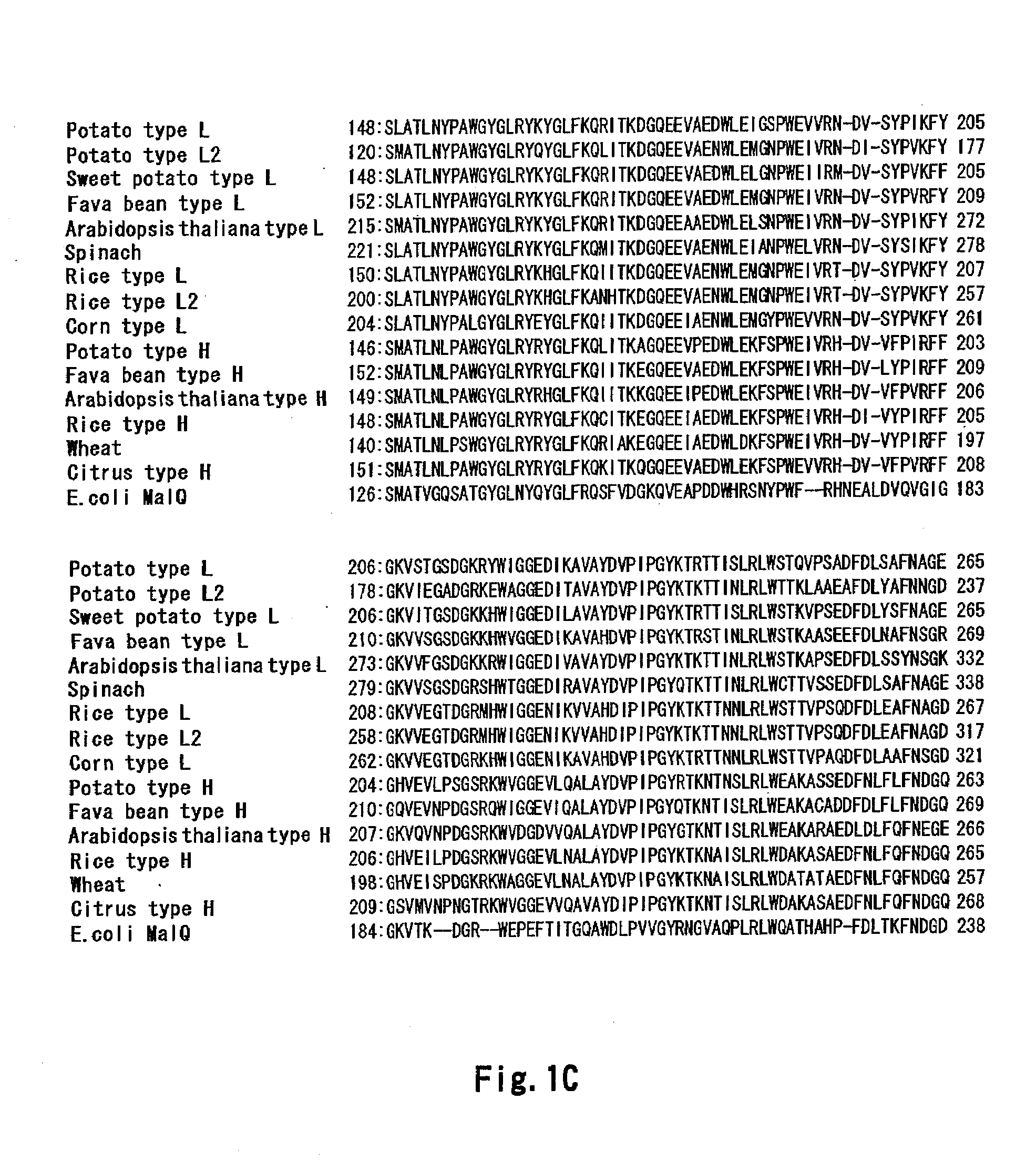METHOD OF HEAT-STABILIZING alpha-GLUCAN PHOSPHORYLASE (GP)
a technology of glucan phosphorylase and gp, which is applied in the direction of enzymology, organic chemistry, transferases, etc., can solve the problems of inability to obtain high molecular weight glucans using gp derived from i>thermus, inability to synthesize high molecular weight glucans, and less useful, so as to improve thermostability, improve thermostability, and improve thermostability
- Summary
- Abstract
- Description
- Claims
- Application Information
AI Technical Summary
Benefits of technology
Problems solved by technology
Method used
Image
Examples
example 1
Preparation, Screening and Sequencing of Potato α-Glucan Phosphorylase Having Improved Thermostability
[0398]To briefly outline, a random mutation was introduced into a potato-derived type L α-glucan phosphorylase gene, a gene with a random mutation introduced therein was introduced into Escherichia coli, α-glucan phosphorylase with a random mutation introduced therein was expressed and, Escherichia coli expressing, among expressed α-glucan phosphorylases, α-glucan phosphorylase having improved thermostability having the ability to synthesize a glucan after heating at 60° C. for 10 minutes was selected, a gene of α-glucan phosphorylase having improved thermostability was isolated from this Escherichia coli, and the sequence thereof was determined.
[0399]Details are as follows.
[0400]Firstly, a gene of potato-derived type L α-glucan phosphorylase (GP) was prepared. According to the description of Takaha, et. al. (Journal of Biological Chemistry, vol. 268, pp. 1391-1396, 1993), am RNA wa...
example 2-1a
Preparation of Potato type L α-Glucan Phosphorylase Having Improved Thermostability by Site-Directed Mutagenesis
[0407]In the present Example, GP having improved thermostability having only one substitution at a position which was found to contribute to improve thermostability in Example 1, GP having improved thermostability having a combination of any two, and GP having improved thermostability having all of 3 were prepared. As an example, an amino acid sequence of GP having improved thermostability having three all mutations (F39L+N135S+T706I) is set forth in SEQ ID NO: 34, and a base sequence encoding such is set forth in SEQ ID NO: 33. For comparison, GP in which amino acids at position 39, position 135 and position 706 was not substituted, and an amino acid at a position having no relationship with these amino acid positions was substituted (GP in which only lysine at 467 position was substituted with asparagine, and GP in which only threonine at position 711 was substituted wit...
example 2-1b
Preparation of Modified Potato Type L α-Glucan Phosphorylase Substituted with Various Amino Acids
[0411]According to the same manner as that of Example 2-1A, except that primers designed so that one place of F39, N135 and T706 was substituted with another amino acid residue were used, a plasmid containing a modified α-glucan phosphorylase gene was prepared, and various modified GP authentic preparations were obtained.
[0412]Thermostability of these modified GP authentic preparations were studied in detail in the Example 3-1 (3-1) below.
PUM
 Login to View More
Login to View More Abstract
Description
Claims
Application Information
 Login to View More
Login to View More - R&D
- Intellectual Property
- Life Sciences
- Materials
- Tech Scout
- Unparalleled Data Quality
- Higher Quality Content
- 60% Fewer Hallucinations
Browse by: Latest US Patents, China's latest patents, Technical Efficacy Thesaurus, Application Domain, Technology Topic, Popular Technical Reports.
© 2025 PatSnap. All rights reserved.Legal|Privacy policy|Modern Slavery Act Transparency Statement|Sitemap|About US| Contact US: help@patsnap.com



